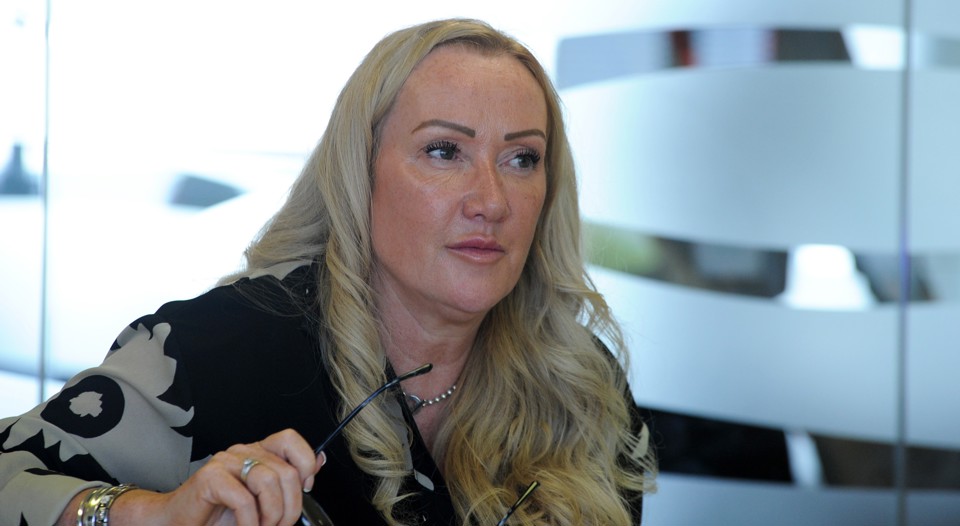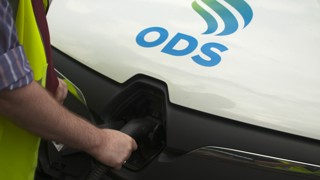“I didn’t leave school saying: ‘I want to be a fleet manager’.”
With pointed honesty, Emma Turness echoes the prophetic words uttered by many a fleet decision-maker over the years.
Having spent a season travelling abroad after completing full-time education, any job was a good job for Turness. It came in the shape of fleet management company CLM, which she joined in a junior admin role.
It turned out to be the perfect foundation for a career in fleet.
“It gave me strong admin skills, and I got the fleet bug,” she said. “I did various roles there, including managing the Auto Trader account, and went on to run the department. Then I became interested in working on the other side of the fence.”
Turness joined Countrywide in 2003 as assistant fleet manager in its surveyor division and flourished as it merged its operations into the Countrywide plc group function. She became the operational foil to Fleet News Awards winner Peter Jardine’s strategic lead.
Two years after Countrywide was acquired by Connells in 2021, she succeeded Jardine as group fleet manager.
Now responsible for a fleet of 2,500 vehicles, all cars bar five vans, Turness runs a team of four fleet administrators with cradle-to-grave fleet management responsibility, reporting into procurement.
“My team have specialisms, such as damages and recharges, fines and speeding, but collectively and individually, we can deal with anything,” Turness said.
Her first job upon appointment was to lead the introduction of a new group fleet policy which focused on streamlining employee bandings across different roles and refreshing relationships with manufacturers.
The previous policy had been largely open book, with 22 bands and endless model choices. Turness has stripped this back to 12 bands and reduced the choice list to four manufacturers for user-choosers and one for job-need vehicles.
“We conducted a mini tender, and selected vehicles based on whole-life cost and emissions, offering both hybrid and fully electric options in each banding. From now on, we’ll also consider vehicle range when making our selection decisions,” she said.
“Through our manufacturer partnerships, we capitalised on favourable terms and took it a step further by designating specific models for each banding, ensuring we had one model from each manufacturer in each band. This allowed us to leverage volume discussions and secure the most competitive pricing.”
She added: “For better brand consistency and more efficient reallocation, we standardised colour choices across the fleet to white, black, grey and silver. This also simplified logistical processes.”
Initially offering “the leeway” of mild hybrid at the entry bandings for younger drivers who typically do not have access to home charging, Turness brought in plug-in hybrids at branch manager level but by next year expects to have transitioned the entire choice list to full electric.
She has started the process of installing chargers across the company’s estate of 1,200 branches, working with facilities who, in some cases, need to consult with landlords.
Driver engagement in the move to electric is supported by her nominated dealer network.
“They have to provide demonstrators and provide advice and feedback to drivers as part of the deal we have with them,” Turness said. “Above all, they have to stick to our policy.”
As part of the policy reinvention, Turness extended the operating cycle from four years to five and fully transitioned to a contract hire model to improve cost control and vehicle lifecycle management.
Previously, Connells operated a capitalised lease scheme with up-front payments. The move will also enable her to implement a consistent renewals programme instead of the peaks and troughs which previously fluctuated with the fortunes of the housing market.
The experience of running an ageing fleet post pandemic caused by the industry-wide supply shortages gave Turness the confidence to extend the replacement cycle to five years/60,000 miles to maximise those leasing savings.
“We have premium brands, and our mileage isn’t that high, so we didn’t see a big increase in maintenance costs,” she explained. “Any increase will be heavily outweighed by the lease savings.”
The first orders went through the system in Q4 last year; immediately, Turness went back to her manufacturer partners with the proof of orders and renegotiated even more favourable terms.
Never satisfied, she has just done the rounds for a second time and, once again, secured better discounts.
“I’ve now decided to do this every quarter, especially as our order volumes start to rise,” she said.
The savings from extended the replacement cycle and repeated negotiations are impressive.
Using the 400 vehicles ordered so far as the bench line for comparison, Turness puts the annual savings at six figures versus the old policy, equating to several million pounds over the five-year cycle.
Reducing operational costs while maintaining reliability is one of Turness’s four core priorities, alongside supporting Connells Group’s wider environmental goal of achieving net zero by 2045.
To further underpin its strategy, Connells Group launched a salary sacrifice scheme in 2022 to make greener vehicles more accessible to employees.
While take-up was initially slow, interest started to increase in the first four months of 2025, compared to last year, thanks to a series of roadshows and promotions on the company intranet.
Leads are up by 65% and credit applications have risen by 53%, suggesting the scheme is starting to gain traction.
The standard contract is written over four years, but Connells Group has also added used cars to the scheme with a choice of two-, three- and four-year contracts.
“When I negotiate the manufacturer deals, they are also fed into the salary sacrifice system,” Turness said. “But we have a wider choice of vehicles on that scheme.”
The quarterly supplier reviews introduced by Turness aren’t just about revisiting costs; she now re-evaluates the whole fleet policy every three months to ensure alignment with new technologies, regulatory changes and broader business objectives.
It ensures Turness fulfils her third core priority of maintaining fleet flexibility to meet changing operational needs.
Adding an additional layer of flexibility is a fleet of 200 long-term flexi-hire vehicles supported by a smaller pool of around 100 daily rental cars for short-term cover.
“This is another area managed by my fleet team,” Turness says. “It ensures we have cover for last minute starters and for maintenance and MOTs if the dealer doesn’t have a courtesy car.”
She added: “We have a strong in-house management policy. We wouldn’t outsource our fleet; keeping the key services in-house means we have better control and are more responsive to the needs of the business.”
Fleet priority number four is driver and public safety. Turness introduced an online driver training and risk assessment programme last year, where drivers complete an initial risk profile, supported by tailored training through various channels including online modules, classroom sessions or one-to-one coaching.
More than 7,000 employees have been through the programme, including both drivers and 4,000 cash takers.
“Since relaunching the programme, we've seen a significant reduction in accident rates and reduced vehicle downtime, improving both safety and cost management,” Turness said.
Among the key initiatives implemented are:
- Online driver training and risk assessments with follow-up training tailored to individual risk profiles
- Seasonal safety bulletins via the intranet
- Optimisation of vehicle specifications to match job roles, improving utilisation and reducing maintenance costs
- More cost-effective vehicle choices at the point of order to reduce lease and insurance costs
- Installation of mileage capture units in all job-need vehicles 12 months ago
In addition, any driver involved in an own-fault incident is charged the excess – Turness amended the policy which previously charged all drivers regardless of fault.
Management of the fleet also extends into the sizeable grey fleet, with tight control over business insurance, MOT, servicing and licence validations. Reminders are issued when insurance is due. No insurance, no cash allowance is the rule.
Since the launch of the new fleet policy, with its low benefit-in-kind taxation BEV and PHEV options, Turness has seen a rise in the number of cash takers asking to opt back into the company scheme, particularly staff in the higher grades.
“The policy has been very well received by cash takers and company car drivers alike,” she said. “Our cars are a critical tool for the business, so this has reaffirmed the importance of the fleet.”






















Login to comment
Comments
No comments have been made yet.